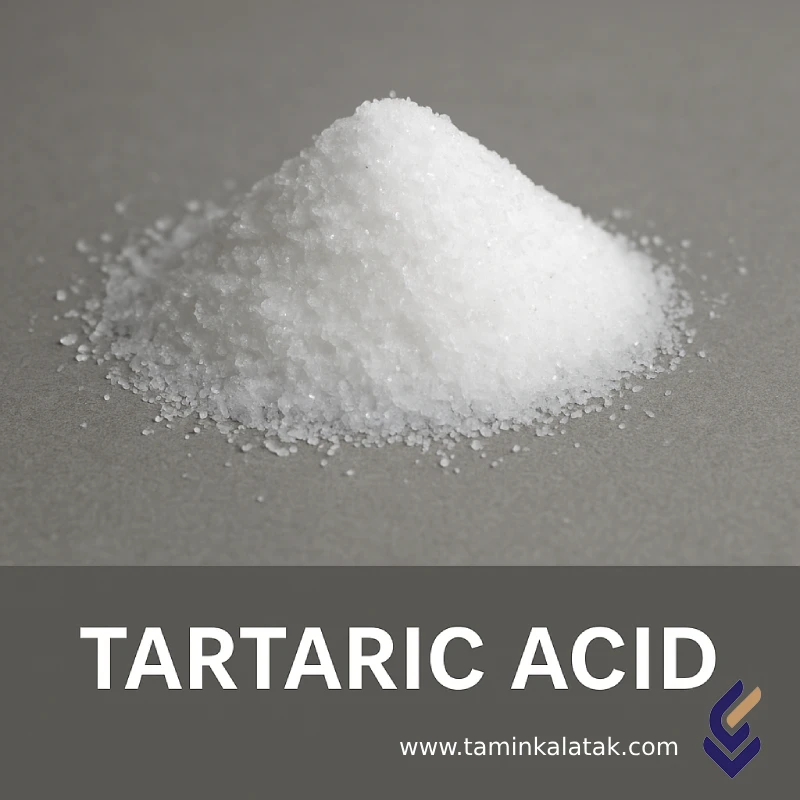tartaric acid
Tartaric acid is a naturally occurring organic compound with the chemical formula C₄H₆O₆, widely found in fruits such as grapes and tamarind. It appears as white, odorless, water-soluble crystals and is considered one of the most important organic acids in the food, pharmaceutical, and chemical industries.
In industry, it is especially used as a pH regulator, antioxidant, and stabilizer, and it is present in a variety of products, from beverages to effervescent medications.
Structure of Tartaric Acid
Tartaric acid contains two carboxylic acid groups (–COOH) and two hydroxyl groups (–OH). Its structure includes two chiral centers, meaning it can exist in different isomeric forms, including L(+), D(−), and DL (racemic) forms. The naturally occurring and biologically active form is L(+)-tartaric acid.
Properties of Tartaric Acid
-
Molecular Formula: C₄H₆O₆
-
Molar Mass: 150.09 g/mol
-
Appearance: White powder or crystals
-
Water Solubility: Soluble
-
Taste: Sour
-
Melting Point: ~170 °C
-
Metal Complexing Ability: High (forms complexes with metal ions such as potassium and calcium)
Applications of Tartaric Acid
✅ Food Industry
✅ Pharmaceutical Industry
✅ Chemical and Metal Industry
✅ Cosmetic Industry
Disadvantages of Tartaric Acid
⚠️ In high doses, it may cause gastrointestinal irritation
⚠️ Potential for allergic reactions in sensitive individuals
⚠️ Decomposes at high temperatures and may lose functionality in thermal processes
⚠️ Inhalation of the powder may irritate the respiratory tract
Advantages of Tartaric Acid
✅ Natural and biodegradable
✅ Compatible with food and pharmaceutical products
✅ Enables precise pH adjustment
✅ High stability in stored products
✅ Extends shelf life of food products
Applications
| Applications | , , , |
|---|
tartaric acid
| Chemical name | Chemical formula | CAS number | Grade | Vapor pressure | Physical appearance | Density (at 20°C) | Melting point | Solubility in water |
|---|---|---|---|---|---|---|---|---|
| Oxalic Acid | C₂H₂O₄ | 144-62-7 | Reagent Grade, ACS Grade, Analytical Grade, Food Grade | Very low; ~0.0013 mmHg at 25°C (for anhydrous form) | White or colorless solid crystals | 1.653 g/cm³ (for anhydrous form) | 101–102 °C (for the dihydrate, C₂H₂O₄·2H₂O) | Very soluble; about 10 g in 100 mL of water at 20°C |







